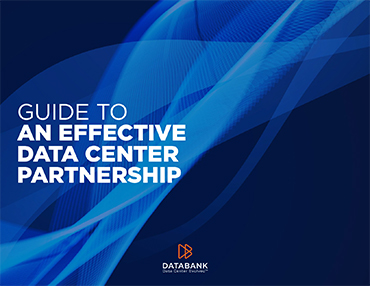When used effectively, data centers drive innovation, efficiency, and agility in businesses. This means they make businesses both more productive and more competitive. With that in mind, here is a quick guide to what you need to know about how businesses gain value from their data centers.
The development of data centers
To understand the role of data centers in business, it helps to understand how they have developed over time.
The earliest data centers were developed by research institutions typically in academia or government. They were simply large rooms dedicated to housing what would now be called IT equipment. Their main purpose was to keep it safe and secure.
Over time, businesses adopted this practice and created dedicated “server rooms” to house their ever-increasing quantity of IT equipment. As the use of IT continued to grow, however, these server rooms became inadequate. This led to the rise of purpose-built, centralized data centers.
These large-scale facilities still form the core of data center operations today. There is, however, now a swing back to using smaller-scale facilities as a complement to them.
This hybrid enables businesses to leverage both the power of large-scale facilities and the flexibility of small, agile ones. It is particularly effective when combined with the use of public cloud services.
Key data center trends for the 2020s and beyond
The key data center trends for the 2020s and beyond tend to be centered on efficiency, sustainability, and/or security. (These three areas often converge). Here are five examples of what that means in practice.
Green data centers: Data centers are working hard to improve the energy efficiency and water-efficiency of the technologies they use, particularly cooling technologies. They are also increasingly integrating renewable energy sources in their operations.
Modular data center designs: Modular data center designs offer scalability and flexibility to meet evolving demands. By deploying prefabricated modules, data centers can quickly adapt to changing workloads and business requirements. This flexibility reduces deployment time and minimizes downtime during expansions or upgrades.
Containerization and microservices architecture: Containers enable lightweight, portable application packaging, facilitating rapid development and deployment of scalable, resilient applications. Microservices architecture decomposes complex applications into smaller, independent services, enabling continuous integration and delivery (CI/CD) pipelines.
Data center automation: Advanced automation tools orchestrate provisioning, configuration management, and workload optimization tasks. They accelerate the deployment of new services and applications while increasing operational efficiency.
Zero-trust security architecture: Zero-trust security models assume that all network traffic is untrusted. Through strict access controls, encryption, and micro-segmentation, zero-trust architectures mitigate the risk of data breaches and unauthorized access. This fosters a highly secure environment for experimentation and collaboration.
The impact of emerging technologies
Here are five emerging technologies that are already delivering major benefits to businesses.
Artificial intelligence (AI): AI algorithms analyze historical data and real-time metrics to forecast demand, optimize resource allocation, and automate routine tasks. By predicting workload patterns, AI enables proactive adjustments to server provisioning, cooling, and power distribution. This minimizes resource wastage and, hence, optimizes efficiency.
Internet of things (IoT): IoT sensors provide real-time monitoring within data centers. This granular data insight facilitates proactive maintenance, troubleshooting, and capacity planning. This reduces downtime and enhances reliability.
Edge computing: Edge computing decentralizes processing power to the network periphery, reducing latency and enhancing performance for real-time applications. By processing data closer to its source, edge computing delivers faster response times and, hence, improves user experiences.
5G technology: 5G technology enables high-speed, low-latency connectivity, unlocking new possibilities for data center architectures and services. This enhances the performance of latency-sensitive applications. It therefore enables innovative services like augmented reality (AR), virtual reality (VR), and autonomous vehicles.
Hardware accelerators: Hardware accelerators excel at parallel processing tasks. This means they accelerate training and inference tasks for AI models. They hence reduce time-to-insight for AI-driven applications and services.
Sustainability practices in data centers
Data center managers are under increasing pressure to maximize the sustainability of their operations. Here are five of the key measures they are deploying to achieve this goal.
Renewable energy integration: By harnessing clean energy, businesses reduce their carbon footprint and dependency on fossil fuels, lowering operating costs and enhancing their environmental sustainability credentials.
Energy-efficient cooling systems: By optimizing cooling efficiency, businesses improve overall energy efficiency, reduce operational expenses, and lower their environmental impact.
Waste heat recovery: By utilizing waste heat, businesses enhance energy efficiency, reduce heating costs, and minimize environmental impact by repurposing otherwise wasted energy.
Water conservation measures: By reducing water consumption businesses reduce their impact on both the local and broader environment and lower their operating costs.
Virtualization and consolidation: Virtualization and consolidation techniques optimize resource utilization by consolidating multiple workloads onto fewer physical servers. This reduces the number of servers required, resulting in lower energy consumption, reduced space requirements, and decreased cooling needs. Businesses benefit from reduced infrastructure costs and improved energy efficiency.






